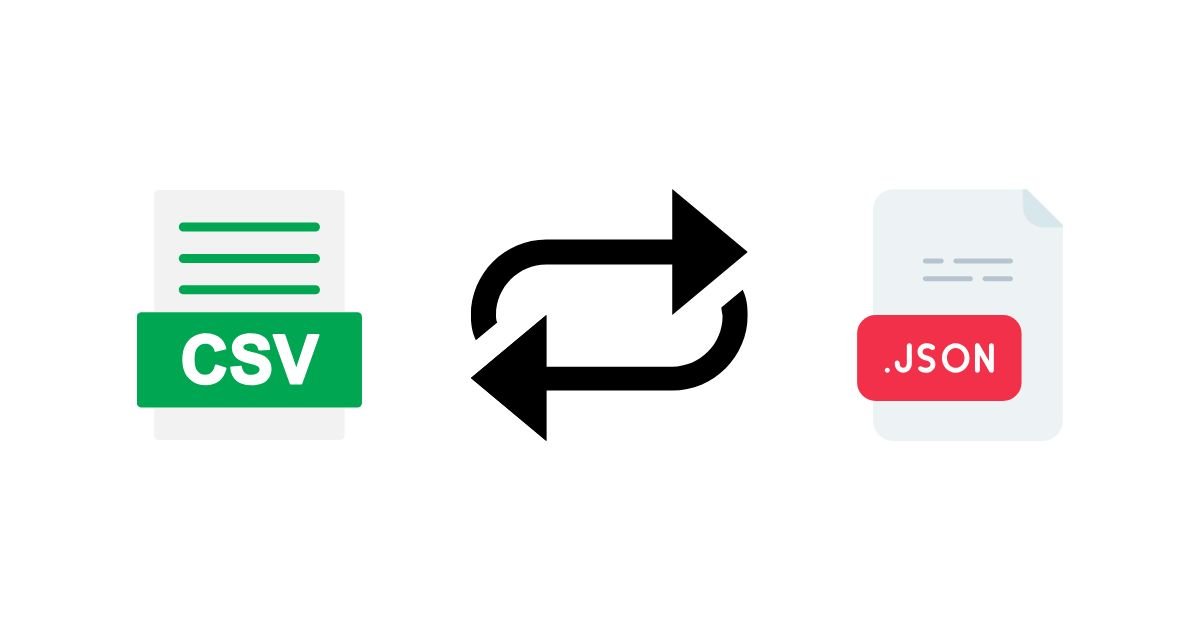CSV ⇄ JSON Without Headaches: Delimiters, Encoding, and Header Rules
Avoid broken rows and weird characters. This guide covers commas vs semicolons, UTF-8, header rows, quoting, and a safe workflow using our CSV → JSON and JSON/XML/CSV Converter.

Quick start: clean conversions in 90 seconds
- Open your file in a plain-text editor and confirm it’s UTF-8 (no BOM).
- Check if the file uses comma, semicolon, tab, or pipe as a delimiter.
- Ensure there’s a single header row of unique names (no blanks, no duplicates).
- Wrap fields with commas/newlines/quotes inside double quotes and escape quotes as
"". - Convert using CSV → JSON, preview, then export. For the reverse, use JSON/XML/CSV Converter.
Choose the right delimiter
CSV literally means “comma-separated values”, but regional settings or datasets sometimes prefer others:
- Comma (,) — most common. Conflicts if descriptions contain commas.
- Semicolon (;) — common in locales where comma is a decimal separator.
- Tab (TSV) — great when fields include punctuation; still quote if fields contain newlines/tabs.
- Pipe (|) — useful for logs or messy text data.
# Example (semicolon-delimited)
id;name;amount
1;Ava;12,50
Rule of thumb: pick a delimiter unlikely to appear in your data. If it might, quote the field.
Quoting & escaping (RFC 4180 style)
- Fields containing delimiter, quote, or newline must be wrapped in double quotes.
- Inside quoted fields, escape quotes by doubling them:
"He said ""hello""".
# ❌ Bad
id,name,notes
1,Ava,He said "hello", then left
# ✅ Good
id,name,notes
1,Ava,"He said ""hello"", then left"
Multiline text (addresses, bios) is valid when quoted—just make sure your tooling preserves line breaks.
Encoding: UTF-8, BOM, Windows-1252
- UTF-8 (no BOM) is safest for web and APIs. Avoid adding a BOM; some parsers treat it as data.
- Windows-1252/Latin-1 files show “smart quotes” or accented letters incorrectly—resave as UTF-8.
- When in doubt, open in a hex-view or modern editor and convert to UTF-8 before processing.
# Quick check (Linux/macOS):
file -I data.csv
# Convert if needed:
iconv -f WINDOWS-1252 -t UTF-8 data.csv -o data-utf8.csv
Header rows & field names
- Use exactly one header row with unique, descriptive names.
- Avoid spaces/symbols; prefer
snake_caseorcamelCase. - No duplicates, no blanks. If a column is empty, either fill or remove it.
# ✅ Good
id,full_name,email,signup_date,is_active
# ❌ Risky
ID,Name,Name,email,,Active?
When converting to JSON, each row becomes an object using header names as keys.
Types: numbers, dates, booleans, nulls
- Numbers: avoid thousands separators; keep
1234.56. For IDs or credit-card-like values, store as strings to preserve leading zeros. - Dates: prefer ISO-8601 (
2025-04-18or2025-04-18T10:30:00Z). - Booleans: normalize to
true/false(or1/0); avoid mixed “Yes/No/TRUE/False”. - Nulls: represent as empty field,
null(JSON), or a sentinel consistently (e.g.,NA).
# CSV → JSON example
id,name,zip,is_active,signup_date
1,Ava,01234,true,2025-04-18
[
{"id":1,"name":"Ava","zip":"01234","is_active":true,"signup_date":"2025-04-18"}
]
Large files & streaming
- Prefer streaming parsers or split files into chunks (e.g., 50–200MB) for reliability.
- For logs, consider NDJSON (one JSON object per line) to append/stream efficiently.
- Validate a small sample first; then run the full dataset.
Safe CSV ⇄ JSON workflow (ToolsUseful)
- Open CSV → JSON and load your CSV.
- Pick the correct delimiter (auto-detect helps).
- Confirm header row and preview the first 50 rows.
- Export to JSON. For reverse conversions, use JSON/XML/CSV Converter.
- Validate in your app or with a schema before publishing.
Tip: keep a “data dictionary” (column name → description, type, examples) in your repo.
Troubleshooting
Rows shift / columns misaligned: a field contains a delimiter without quotes—wrap it and escape quotes as "".
Garbled characters (�): file isn’t UTF-8—convert and retry.
Header becomes a row: missing or duplicated header—fix to a single, unique header row.
Leading zeros disappear: treat as strings in JSON or set column type to text in your importer.
Previous
JSON Formatter 101: Common Errors and Quick Fixes
Next
UNIX Timestamp Converter: Time Zones, Milliseconds & Pitfalls